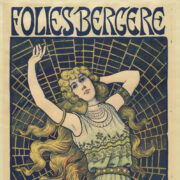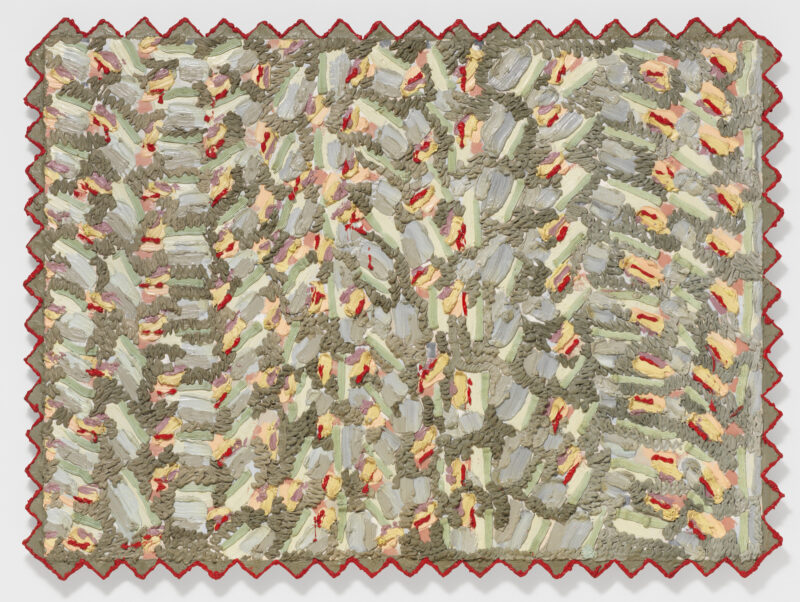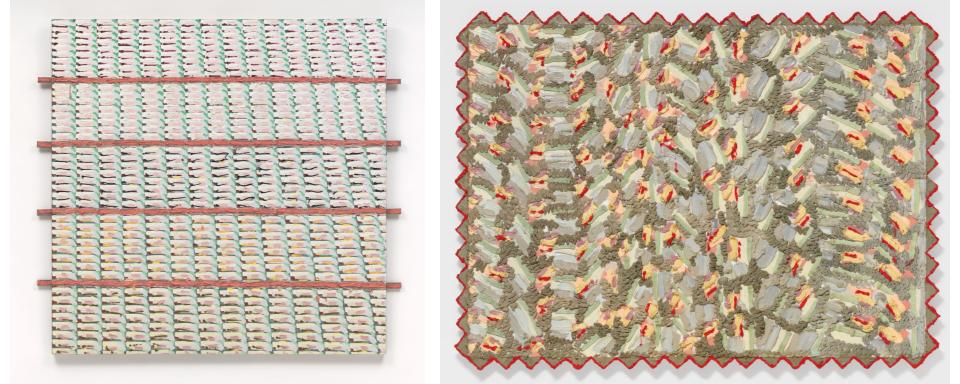Staging Art Nouveau: Women Performing at the Turn of the 19th Century


Search for art, find what you are looking for in the museum and much more.

Explore the Pattern and Decoration Movement of the mid-1970s - mid-1980s and the artists that used decorative motifs and designs as the main subjects of their paintings. By doing so, pushed against an exclusionary Western art historical narrative by referencing marginalized artistic traditions like quilting, metalwork and embroidery.
The artists who participated in the Pattern and Decoration Movement (P&D) of the mid-1970s to the mid-1980s used decorative motifs and designs as the main subjects of their paintings. Like their forbears the abstract expressionists, as well as their contemporaries the minimalists, P&D artists employed a flattened paint surface without a foreground or background. However, unlike these other groups, they insisted on pushing against an exclusionary Western art historical narrative by focusing on the artistic traditional relegated to the margins as “applied” art rather than “fine” art: quilting, embroidery, metalwork, and basket weaving, among other art forms.
By elevating the patterns and colors in these various sources as their central painting subjects, they also highlighted the gender, class, and racial bias that had kept these art forms on the periphery, categorized as “women’s work,” “craft,” or “non-Western art.”
Pattern and Decoration was a feminist movement determined to upend rigid hierarchies, however, both men and women participated. Included in this online presentation are works by Cynthia Carlson, Lucas Samaras, Robert Zakanitch, Nancy Graves, Mary Grigoriadis, and Sam Gilliam.
Mary Grigoriadis grew up in the Greek Orthodox traditional and especially admired the iconostasis, a wall of icons that separated the sanctuary of the church from the nave. Although inspired by her early interest in these icons, Grigoriadis’s paintings focus on the various architectural ornamentations that frames the saints depicted in the icons rather than the saints themselves. Here, a dynamic pattern seems to stand in for Ixion, a character from Greek mythology who attempted to seduce Zeus’s wife Hera and was bound to a fiery wheel that turned without ceasing.
Lucas Samaras worked across a variety of mediums and genres during his long career, including assemblage sculptures (like Box #89 in VMFA’s collection) and photography. In the 1970’s he began his Reconstruction series in which he sewed together geometric shaped fabric strips, forming abstract compositions with a sewing machine. In works such as Reconstruction #33, he fused the tradition of quilting with the aesthetic styles of early 20th-century movements such as Russian Suprematists painting.
Like the Pattern and Decoration artists of the 1970s and 1980s, the Suprematists had looked to the patterns in Russian folk art for inspiration.
The grandson of Eastern European immigrants, Robert Zakanitch grew up surrounded by decorative motifs in their home, from wallpaper to ornate lace. Inspired by the patterns of such domestic spaces, he turned away from his severe, minimalist painting style (like Double Violet in VMFA’s collection) and embraced subjects such as the floral pattern in Hot Pansies. A central member of Pattern and Decoration, he convened one of the group’s first formal meetings at his studio to discuss their shared goals in 1975.
Painter and sculptor Nancy Graves began a series of paintings in the early 1970s that engaged the language of mapping, especially the transmission patterns sent from outer space by NASA via satellite. The “Yvonne” in the title most likely refers to her contemporary and friend Yvonne Rainer, a choreographer, filmmaker, and artist. Grave’s dynamic composition fuses multiple brightly colored patterns into a rhythm that undulates like dance movements.
A central member of the Pattern and Decoration movement, Cynthia Carlson rose to prominence in the late 1960s and early 1970s. She often used cake-decorating tools to pipe thick dabs of paint like frosting onto the canvas. She also added shapes to the border of the canvases themselves to create patterns, such as the triangular edges of The Brat or the extended horizontal lines in The Horsemen. Carlson quite literally embodied the definition of “women’s work” by painting wallpaper patterns by hand from floor to ceiling in whole room installations, such as the one at New York’s Hundred Acres Gallery in 1979 and here at the Virginia Museum of Fine Art’s Institute of Contemporary Art in 1980.

L: Horseman, 1974, Cynthia Carlson (American, born 1942), oil on canvas. Virginia Museum of Fine Arts, gift of Mr. Ivan Karp, 74.30.2.
R: The Brat, 1974, Cynthia Carlson (American, born 1942), oil on shaped canvas. Virginia Museum of Fine Arts, gift of Estate of Joan F. Brenner, 2017.409.
Based in Washington, DC, for most of his career, Gilliam was most often associated with the stained canvases of the Washington Color School. By the late 1960s, he began to drape his painted and stained canvases, hanging them to dramatic effect across rooms. In the 1970s and 1980s, his works became increasingly focused on geometric shapes, sometimes mimicking traditional quilting patterns, like the work Purpled from his Chasers series in VMFA’s collection. In this work, the shape of the painting breaks into sculptural form and offers an interesting dialogue with the efforts and interests of the Pattern and Decoration artists featured here.
Although Pattern and Decoration is no longer operative as a formal movement, many contemporary artists such as Shinique Smith and Ebony Patterson continue to incorporate textiles and decorative motifs into their works as they explore issues of identity, community, and visibility.
“Really basic stuff stands out to me. I’m fascinated by the way we feather our nests as creatures. And the way we survive when we don’t have a nest.”
– Shinique Smith
A native of Baltimore, Shinique Smith makes her signature multimedia paintings by incorporating clothing gathered from both her own closet and from second-hand shops. Smith’s colorful works comment on the personal nature of our fashion choices as well as the excess of the fashion industry and the environmental impact of the massive amounts of clothing discarded annually. Her painterly gestures also reference a wide range of artistic traditions, including graffiti and Japanese calligraphy. Recently, Smith began producing works that reference theme s of shelter and homelessness, including this one, which she evocatively titled And, their dreams of home unraveled.
Shown slowly in reverse, Patterson’s film portrays a trilogy of three men, each on a separate screen, dressing themselves while tears quietly roll down their cheeks. Like the triptych paintings often found on the altar pieces at the front of churches built during the Renaissance, these figures occupy a chapel-like space where viewers can sit and contemplate their presence. The voice of a young boy reading the poem “If We Must Die,” by Jamaican-born Harlem Renaissance poet Claude McKay, frames the scene. McKay wrote his poem, published in 1919, following weeks of race riots dubbed “the Red Summer,” in which hundreds of African Americans were killed during attacks on Black communities in several cities across America. One hundred years later, Patterson reiterates McKay’s words as a soundtrack to her visually arresting work, exposing the continued vulnerability of Black bodies in our present society.